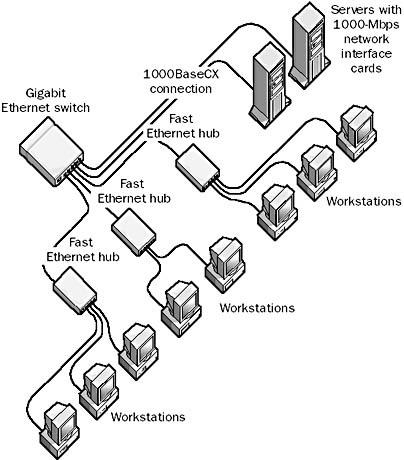- Related articles
- Optical Transceivers for Cisco WS-C2960S-F24TS-L Switch
- All Cisco XENPAK-10GB-ER+'s information (List price, Specs, Compatibility matrix)
- Optical Transceivers for Cisco IE-2000-16TC-G-X Switch
- All Cisco CFP-40G-LR4's information (Overview, List price, Specs, Datasheet PDF, Compatibi
- Optical Transceivers for Cisco WS-C2960-48PST-L Switch
- Optical Transceivers for Cisco IE-3000-4TC Switch
- All Cisco GLC-TA's information (Specs, Compatibility matrix)
- Applicable to 100BASE-F Standard Optical Transceiver Models
- Optical Transceivers for Cisco SG350-28-K9-EU Switch
- Optical Transceivers for Cisco WS-C3650-48TQ-L Switch

Introduction
In this article, we will briefly introduce the 1000BASE-CX Ethernet standard and what is the difference between 1000Base-LX, 1000Base-CX & 1000 Base-T, so that allows viewers to have a more profound understanding for 1000BASE-CX technology, better to understand the basic solutions to 1000BASE-CX.
| 10G SFP+ Active Copper Cable | Passive Copper Cable 10G |
What is the 1000BASE-CX technology?
A type of standard for implementing Gigabit Ethernet networks The CX in 1000BaseCX stands for short-haul copper, and it indicates that this version of Gigabit Ethernet is intended for short cable runs over copper cabling. Gigabit Ethernet standards are defined in the 802.3z standards of Project 802 developed by the IEEE. 1000BaseCX technologies are in the beginning stages of being widely implemented in enterprise-level networks and are primarily used for collapsed backbones and high-speed interconnects within wiring closets and equipment rooms.

What are the Difference Between 1000Base-LX, 1000Base-CX & 1000 Base-T?
1000BASE-LX is a fiber optic Gigabit Ethernet standard specified in IEEE 802.3 Clause 38 which uses a long wavelength laser (1,270–1,355 nm), and a maximum RMS spectral width of 4 nm. 1000BASE-LX is specified to work over a distance of up to 5 km over 10 µm single-mode fiber.
1000BaseCX is an extension of standard Ethernet technologies to gigabit-level network speeds. 1000BaseCX is normally implemented using shielded twisted-pair (STP) cabling. Cable segments have a maximum length of only 25 meters.
1000BASE-T (also known as IEEE 802.3ab) is a standard for Gigabit Ethernet over copper wiring. Each 1000BASE-T network segment can be a maximum length of 100 meters (330 feet), and must use Category 5 cable or better (including Cat 5e and Cat 6).





















































